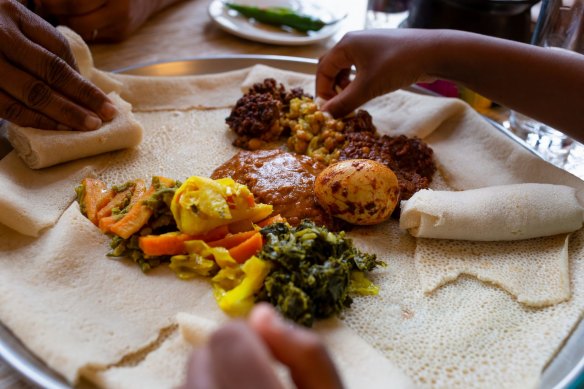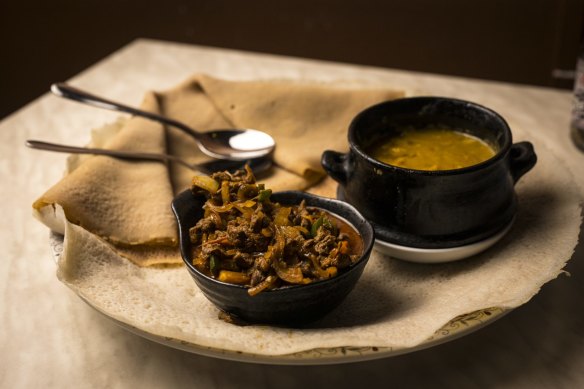This dish is a staple of one of the world’s most underrated cuisines
The dish
Shiro wat, Ethiopia

Plate up
Name the world’s most underrated cuisine. You might select Georgian food, which is fair. Peruvian cuisine still doesn’t get the recognition here in Australia that it deserves. Even Chinese food, given its incredible diversity, isn’t fully appreciated by the rest of the world.
But how about Ethiopian? Cast aside all lingering images of 1980s famine and instead concentrate on the amazing array of dishes, developed over thousands of years, that are cooked and consumed in Ethiopia, beginning with a staple of many a meal: shiro wat.
Shiro wat is typical of Ethiopian fare, a vegan stew based on ground chickpeas or broad beans, cooked with minced onions, and garlic, plus a varying combination of a wide variety of herbs and spices: chilli, basil, oregano, ginger, fenugreek, cardamom, cloves, cinnamon, and coriander. This stew is then served as part of a larger meal atop a spongy, slightly sour injera pancake, which sops up some of the liquid and is the perfect foil for the spice.
First serve

Being vegan fare, free of (relatively expensive) meat, shiro wat has long been considered food of the poor in Ethiopia, though these days it is popular across the country. There’s no record of when exactly this dish first appeared, though the word “shiro” is believed to be a variation of a word in an ancient Cushitic language – “soor” – which would mean the dish is very old indeed. It’s eaten year-round in modern-day Ethiopia, though is most popular around Lent, when devout Christians give up meat for 40 days.
Order there
Any restaurant serving traditional food in Ethiopia will do a version of shiro wat. Our pick of the bunch in Addis Ababa is Yod Abyssinia (no website).
Order here

In Sydney, the excellent Gursha Ethiopian in Blacktown (gurshaethiopian.au) has you covered. In Melbourne, head to Footscray to try Ras Dashen (247 Barkly Street). In Adelaide, Addis Ababa Cafe is worth checking out (addisababacafeandrestaurant.com.au).
One more thing
A classic Ethiopian meal will usually consist of at least three or four different dishes all served on top of the injera and eaten family style, with everyone crowded around a single large platter. The injera is torn up with the hands and used as a vessel to scoop up the other dishes.
Sign up for the Traveller Deals newsletter
Get exclusive travel deals delivered straight to your inbox. Sign up now.
Traveller Guides
From our partners
Original URL: https://www.brisbanetimes.com.au/traveller/inspiration/this-might-be-the-world-s-most-underrated-cuisine-20240716-p5ju19.html
